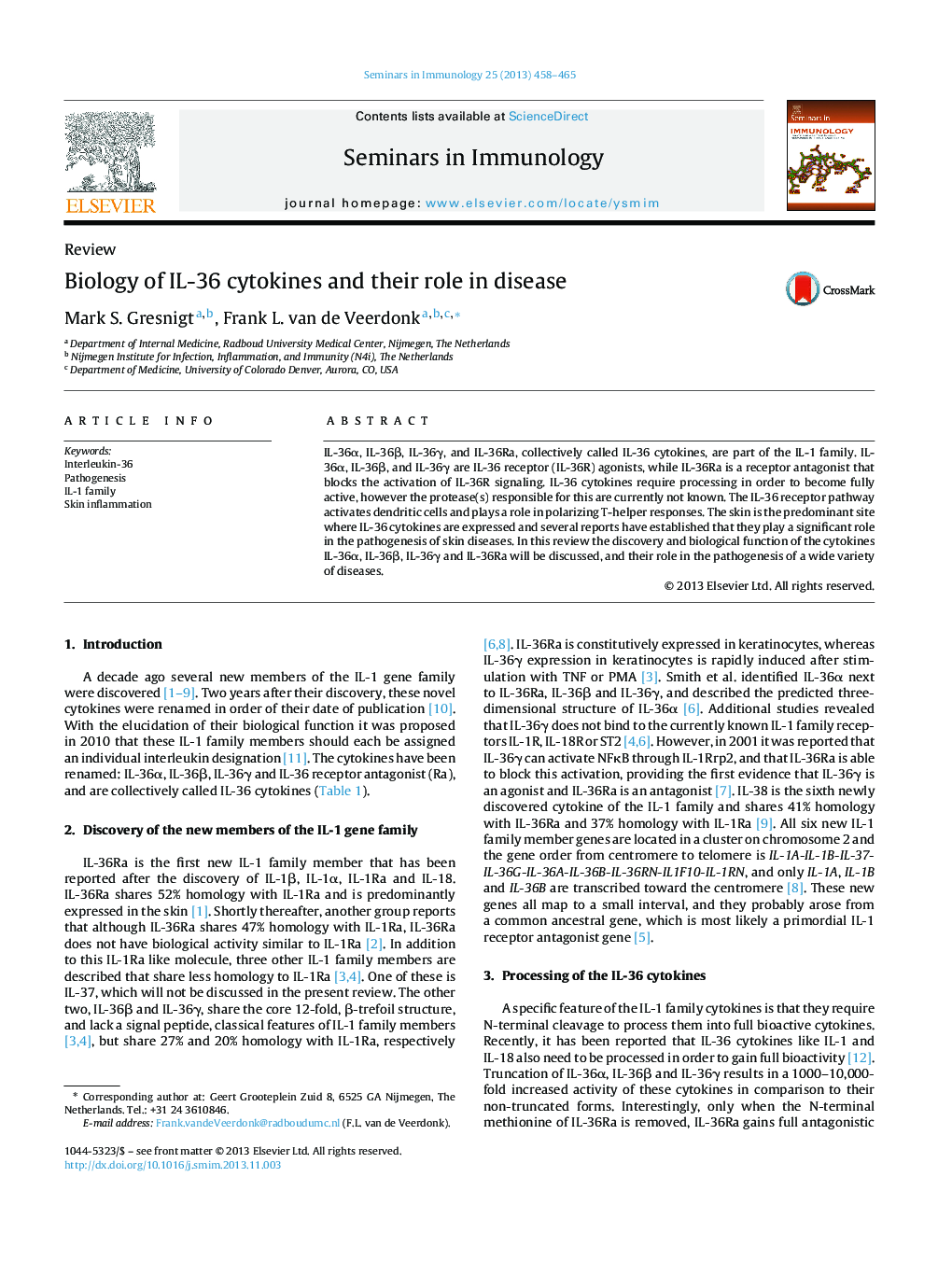| Article ID | Journal | Published Year | Pages | File Type |
|---|---|---|---|---|
| 3391321 | Seminars in Immunology | 2013 | 8 Pages |
•IL-36 family cytokines share 20–52% homology with IL-1Ra.•N-terminal processing is required for optimal bioactivity of IL-36 cytokines.•IL-36 modulates immune responses by DC activation and T helper subset polarization.•IL-36 signaling plays a crucial role in skin homeostasis and inflammation.
IL-36α, IL-36β, IL-36γ, and IL-36Ra, collectively called IL-36 cytokines, are part of the IL-1 family. IL-36α, IL-36β, and IL-36γ are IL-36 receptor (IL-36R) agonists, while IL-36Ra is a receptor antagonist that blocks the activation of IL-36R signaling. IL-36 cytokines require processing in order to become fully active, however the protease(s) responsible for this are currently not known. The IL-36 receptor pathway activates dendritic cells and plays a role in polarizing T-helper responses. The skin is the predominant site where IL-36 cytokines are expressed and several reports have established that they play a significant role in the pathogenesis of skin diseases. In this review the discovery and biological function of the cytokines IL-36α, IL-36β, IL-36γ and IL-36Ra will be discussed, and their role in the pathogenesis of a wide variety of diseases.
